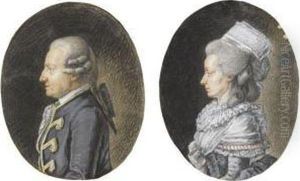Valliere Paintings
Maurice Denis, born on November 25, 1882, in Granville, France, and not widely recognized under the pseudonym 'Valliere', was a significant figure in the art world who contributed vastly to the development of modern art in the late 19th and early 20th centuries. As a painter, writer, and theorist, Denis was a founding member of the Nabis group, a collective of artists inspired by Paul Gauguin's Synthetism and Japonism. The Nabis, including Pierre Bonnard and Édouard Vuillard, sought to break away from the representational style of impressionism towards more symbolic content, emphasizing the importance of color and form in conveying meaning.
Denis is perhaps best remembered for his declaration in 1890 that 'Remember that a picture, before being a battle horse, a nude woman, or some anecdote, is essentially a flat surface covered with colors assembled in a certain order.' This statement laid the groundwork for many modern art movements by stressing the importance of form and color over the subject matter. Throughout his career, Denis produced works that blended religious themes with the innovative aesthetics of his time, making significant contributions to the Symbolist movement and beyond.
In addition to his painting, Denis was a prolific writer and theorist. He penned numerous articles and books discussing the role of tradition and spirituality in art, advocating for a synthesis of classical and contemporary approaches. His theoretical works influenced not only the Nabis but also the direction of modern art.
Denis's commitment to integrating art into everyday life led him to work in various mediums, including murals, book illustrations, and set designs, thereby broadening the scope of his influence. Despite facing criticism for his conservative views in the rapidly evolving art world of the early 20th century, Denis's work remained rooted in his belief in the spiritual and communal purposes of art.
Maurice Denis's legacy is that of a visionary who saw beyond the trends of his time. His contributions to the theory and practice of art helped pave the way for future movements such as Cubism and Abstract Expressionism. Denis died on November 13, 1922, leaving behind a body of work that continues to inspire and challenge artists and art lovers alike.

